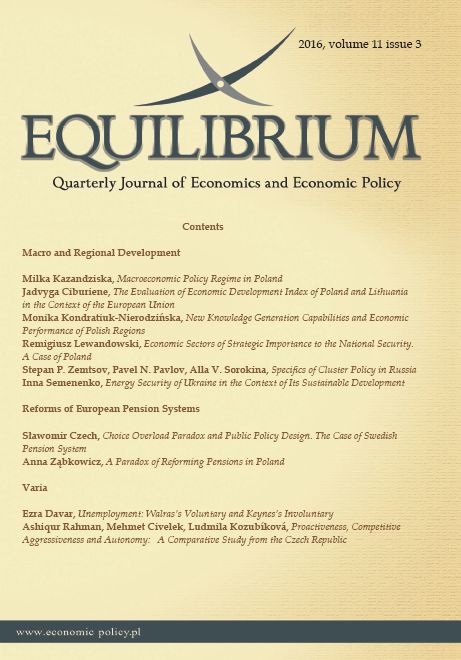UNEMPLOYMENT: WALRAS’S VOLUNTARY AND KEYNES’S INVOLUNTARY
UNEMPLOYMENT: WALRAS’S VOLUNTARY AND KEYNES’S INVOLUNTARY
Author(s): Ezra DavarSubject(s): Economy, National Economy
Published by: Instytut Badań Gospodarczych
Keywords: Walras; Keynes; Voluntary Unemployment; Involuntary Unemployment; Aggregate Supply function
Summary/Abstract: This paper shows that Keynes’s involuntary unemployment derives from Walras’s voluntary unemployment by means of changing the characteristic of the aggregate supply curve (function) of labour. On the one hand, when the original aggregate supply function is a strong-ly increasing function, as in Walras’s approach, there might only be voluntary unemployment, and its magnitude is the difference between the available quantity of labour and the equilibrium point. On the other hand, if the supply curve of labour is a weakly increasing one, which means that the supply function may have a horizontal segment, then there might be involuntary unemployment if the equilibrium point is located be-tween boundary points of the horizontal segment, and the magnitude of involun-tary unemployment is the difference between the right boundary point of the hori-zontal segment and an equilibrium point. According to Walras’s approach, “forced unemployment” might also might be considered, which is the result of the intervention of external forces (government, monopoly, trade unions, and so on) into the market, and is therefore a disequilibrium phenomenon.
Journal: Equilibrium. Quarterly Journal of Economics and Economic Policy
- Issue Year: 11/2016
- Issue No: 3
- Page Range: 605-629
- Page Count: 25
- Language: English

